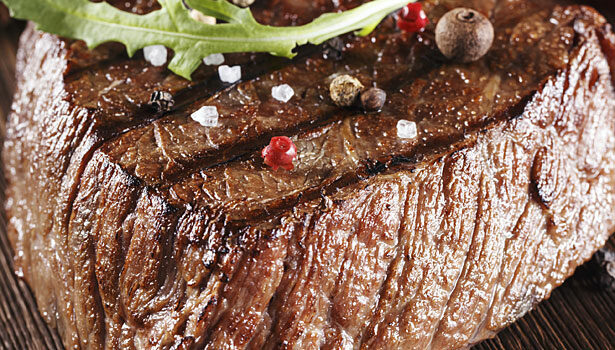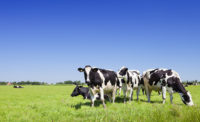State of the Industry: Beef
Beef demand exceeds expectations
What strengthening demand for beef means for your business.




Over the past year, anyone in the business of selling or marketing food has encountered higher food costs. Proteins in particular have challenged purveyors to consider how to continue offering the products their customers want. Various strategies are being used to mitigate the impact of higher prices, but at the same time consumers continue to want and expect to get their favorite protein, beef, where and when they want it. Its price has risen because of a variety of factors, including devastating drought conditions in the most productive cattle regions.
Yet, at the same time, an unexpected phenomenon is occurring: Demand for beef is growing, despite its increased price.
This goes against conventional thinking — that as price goes up, the quantity demanded goes down —since, in reality, demand for beef is so strong that consumers are willing to pay more for it. And that’s good news for retailers, suppliers and foodservice operators.
According to Kansas State University agricultural economist Glynn Tonsor, beef demand in the second quarter of 2014 was the strongest in 10 years, and 2014 beef demand has remained stronger than it was in 2013. In fact, while speaking at the 2014 K-State Risk and Profit Conference on Aug. 21, he said beef demand this year has been stronger than most industry watchers expected, including him.
“If the price of beef was up 3 percent, I would have said demand was flat,” he said. “But prices have been up 10 percent, and people are still buying beef.”
Consumer research supports this notion. Overall, 90 percent of consumers enjoy beef on a monthly basis at home and in restaurants, with 75 percent eating the same amount of beef as last year, and 14 percent saying they are eating more.
For foodservice operators and retailers, this demand for beef means the consumer continues to purchase beef in stores and restaurants, and they will continue to do so. Though beef presents a challenge when it comes to price, it also presents immense opportunity.
In retail, beef makes more money for stores than any other protein. When looking at dollar sales, beef alone delivers what other proteins do combined. Beef also adds value to the basket; when either steak or ground beef is in the basket, it makes up nearly 20 percent of the total basket value, and consumers purchase more other products, as well, when these beef products are in their baskets.
Though beef has a higher price tag on it, many retailers are seeing success in merchandising programs that address the needs of their shoppers with offerings and solutions such as value packs, portion sizes, cross-merchandising, on-pack labeling and in-store educational efforts. Highlighting beef’s convenience, taste and nutrition helps shoppers understand beef’s value and makes it worth paying more for.
Oklahoma State University tracks shoppers’ willingness to pay through its monthly Food Demand Survey (FooDS). In its most recent study, consumers said they are willing to pay 28 percent more for steak than chicken breast, and 41 percent more for steak than pork. What’s more, the reports’ authors said for the first time since FooDS began, more consumers plan to buy more beef than plan to buy less.
In restaurants, beef remains the No. 1 protein in volume, market share and dollar sales. According to Technomic’s 2013 Usage and Volumetric Assessment of Beef in Foodservice, beef volume in foodservice grew by 79 million pounds in 2013 alone, to a total of nearly 8 billion pounds. Beef growth has outpaced growth of the foodservice industry over the past five years, and consumers’ love for beef has led it to become the No. 1 earning protein for restaurant operators since the recession began in 2009. Beef has made more money for operators in the last few years than any other protein. And it’s all because patrons have — and will continue to find — steak and other beef dishes “worth it.”

Continuing to grow demand
This strong demand in both retail and foodservice is sending a signal to the U.S. beef farmers and ranchers to increase the beef supply, which they are doing, particularly in regions that have had enough rain. That being said, future herd expansion will need some help from Mother Nature, and given the production lifecycle for beef, a calf born today will take two years to enter the market, meaning that tight beef supplies are expected through the next couple years.
While America’s beef farmers and ranchers stay focused on rebuilding their herds and continuing to raise the quality, nutritious beef consumers want, they value the partnership of businesses that identify creative and efficient ways to leverage the strong demand to sell and market the beef products that consumers desire.
There are many strategies to help businesses through this time of higher prices, but also higher demand. For more information on menuing and marketing beef, visit www.BeefFoodservice.com or www.BeefRetail.org.
Looking for a reprint of this article?
From high-res PDFs to custom plaques, order your copy today!









